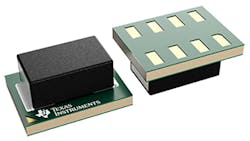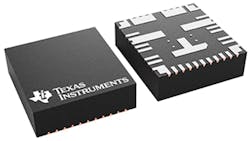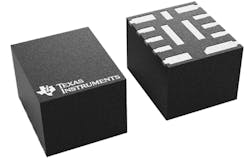Members can download this article in PDF format.
As the digital transformation permeates deeply across so many industries, it’s easy to forget that some things just work better in analog. And today, the analog world is still alive and thriving. A popular example of that is in the audio component world.
Today’s mass-market audio gear is built largely with digital circuits. Yet, peel back the layers of this platform and one can find a segment that still uses analog components—vacuum tubes, particularly. High-end tube amplifiers are available from eclectic companies such as Audio Research, Fosi, Luxman, Mastersound, Rockville, and others. Even the less esoteric companies like Macintosh and Pyle still offer high-end tube-amplified products.
Besides audio, analog technology is alive and well in a myriad of other circuits: power supplies, sensors, video equipment, medical instruments, automotive systems, and more.
Why Analog Rather than Digital?
The fact is that analog circuits can offer better outcomes than their digital counterparts for a variety of use cases. In these applications, analog makes certain signals much easier to process, with fewer components, less distortion, and greater accuracy.
Analog also has advantages in instrumentation. Analog handles the measurement and control of physical quantities, such as temperature, pressure, speed, and flow, more accurately than digital. Analog signals are robust and are much less sensitive to interference. And such circuits are typically less complex and less expensive.
Of course, there’s much more to analog. But space limits what can be covered in this discussion. Therefore, it will focus on a common analog component found nearly everywhere—the power module.
Packaging the Power Stage
For power-stage design, engineers have several options. Among them are low-dropout regulators (LDOs), switching regulators, and power modules.
When inductive elements are part of a power circuit, it’s intrinsically analog. Typically, inductors, in whatever form, are external because they’re bulky components and not easily integrated into an IC. This significantly affects the package and can present challenges for circuits that are size constrained.
Designers have been tackling these difficulties for some time. And progress has been made. New packages are being developed that solve some of these issues and make the designer’s job easier.
Today’s power modules come in a variety of configurations. Some are generic, such as TI’s TPSM83100, and others are proprietary, such as the TPSM82816.
While many power modules are mature, designs do evolve. For example, there’s the MagPack. This unique package design eliminates reliance on third-party inductors and offers better thermal conductivity and less electromagnetic interference (EMI) than typical power modules.
However, proprietary comes at a cost. The more mature packages, such as the embedded micro system in package (µSiP), or the leaded quad flat no-leads (QFN), optimize economy. The MagPack, though, is on the cutting edge of power-module technology, and thus is more expensive.
Choices, Choices, Choices
Obviously, many power module choices are available, and the ultimate selection depends on multiple factors: cost, size, performance, package, specifications, etc.
Each design has its advantages and disadvantages. For example, the µSiP offers a power module with a converter IC embedded inside a substrate. However, the inductive and passives are still mounted externally (Fig. 1).
The major advantage of this design is that the converter IC doesn’t require any additional space. This approach offers a smaller footprint, ideal for designs with board space at a premium. It serves up a good set of features and functionality versus its cost.
The QFN typically is offered in two packages—overmolded and PCB-mounted open frame (Fig. 2). Of the two, overmolded is the more popular.
These are devices that replace leads with flat pads. An example of that is the TI TPSM64406 overmolded module. The major advantage of this configuration is its applicability. It can be integrated into a wide variety of use cases.
The MagPack is the next evolution in packaging. The advantage of this design is that it’s inclusive and uses a magnetic-based technology. This eliminates the need for third-party inductors.
The PSM82816 MagPack power module (Fig. 3) use a proprietary technique to improve on power density, thermal conductivity, and EMI. This configuration saves board space by reducing the point-of-load (POL) power supplies by 20%, typically—a critical consideration in today’s power-sensitive environments.
Get Cozy with Analog
Today, many analog designs are still used in projects across the electronic design landscape. However, finding resources can be daunting, especially if you’re in the digital space. To that end, TI has created the TI precision labs library series. This resource offers a plethora of video training for analog, signal chain, and embedded processing designers.
Here, the designer can find a wealth of knowledge to help them design amplifiers, clocks and timing circuits, data converters, microcontrollers, motor drivers, switches, sensors and simulators, and more.
This resource is dynamic and constantly being expanded with new designs and devices. In fact, it’s the most comprehensive, on demand, online classroom for those seeking to expand their design and engineering expertise.
Another indispensable analog resource is TI’s periodic Analog Design Journal. This is a collection of white papers from a deep well of design experience at the edge of the analog envelope. It provides a no-nonsense resource that helps designers get past speed bumps in emerging applications. Two good examples:
- Using an ideal diode controller as a scalable, input bypass switch in solar applications.
- How anti-aliasing filter design techniques are employed to improve active RF converter front ends.
Obviously, this article barely scrapes the surface of the wonderful world of analog. But analog is alive and well and at the ready with an expansive set of resources to ensure your design success.



